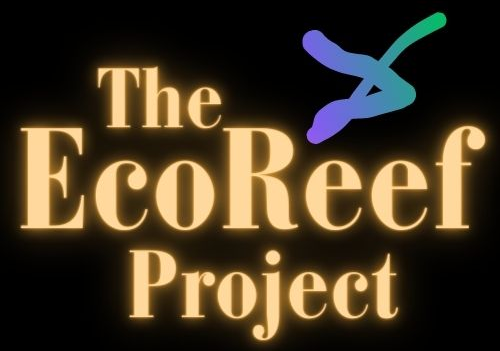The Essential Role Of Regeneration In Healing Our Hurt Planet

Understanding Regeneration in the Environment
Is It Good or Bad?
Our planet is a complex, living system that thrives on balance and renewal. Over time, however, human activities and natural disasters have disrupted this balance, leading to widespread environmental degradation. In response, regeneration has emerged as a vital strategy to heal our ecosystems and restore the harmony we depend on. But is regeneration always a good thing, or does it come with risks we need to carefully consider?

Defining Environmental Regeneration and Its Processes
What Is Environmental Regeneration?
Environmental regeneration refers to the natural or assisted process of restoring ecosystems and biodiversity to a healthier state after degradation. This can include reforestation, soil restoration, wildlife reintroduction, and even the recovery of water bodies. Regeneration aims to repair damage caused by human activities like deforestation, pollution, or overfarming, as well as natural events like wildfires or floods.
How Does Regeneration Work?
Nature itself has mechanisms to regenerate over time. For instance, plants can reseed, soil microorganisms can break down pollutants, and animal populations can recover if given adequate protection. However, human intervention often speeds up or enhances these processes through activities like planting native species, cleaning up contaminated areas, or creating artificial habitats.
The Benefits of Environmental Regeneration
Restoring Balance and Biodiversity
One of the most significant advantages of regeneration is the restoration of biodiversity. Diverse ecosystems are crucial for sustaining life on Earth, as they support food chains, regulate climate, and provide resources for human survival.
Mitigating Climate Change
Regeneration can counter the impacts of climate change by increasing carbon sequestration. For example, reforested areas absorb more CO2, reducing the greenhouse gases in the atmosphere. Restoring wetlands can improve flood resilience while capturing carbon.

The Challenges and Risks of Environmental Regeneration
Unintended Consequences
Not all regeneration efforts are risk-free. Introducing new species to an area in the name of restoration can disrupt existing ecosystems if not carefully managed. Similarly, over-relying on specific regeneration methods may overlook broader ecological needs.
Sustainability of Efforts
Regeneration projects require long-term commitment and funding. A lack of consistent effort can lead to incomplete recovery or even reversal of progress. Moreover, prioritizing regeneration in some areas may divert resources from equally critical environmental issues elsewhere.
Is Regeneration Good or Bad?
Balancing the Scale
Environmental regeneration is largely beneficial when implemented thoughtfully and sustainably. It helps mend ecosystems and mitigates the effects of climate change while fostering biodiversity. However, it’s not a universal solution to all environmental problems, and poorly planned regeneration efforts can lead to unintended harm.
A Necessary Effort
Given the urgent need to address global environmental challenges, regeneration is a vital tool for creating a healthier planet. While it has its risks, careful planning, collaboration, and education can help maximize its positive impact and minimize drawbacks.

Additional Considerations
The Role of Technology in Regeneration
Modern technology is playing an increasingly important role in regeneration projects. Innovations like drone planting, satellite monitoring, and AI-driven ecosystem management are enhancing our ability to restore damaged environments efficiently and accurately.
The Importance of Local Communities
Involving local communities in regeneration efforts ensures that projects are culturally sensitive and sustainable. Community-led initiatives often have higher success rates because they align with the needs and values of the people who rely on those ecosystems.
Regeneration in Urban Areas
Regeneration isn’t just limited to forests and wetlands. Urban regeneration focuses on greening cities, restoring parks, and creating green rooftops. These projects enhance urban biodiversity, improve air quality, and make cities more livable for their residents.
The Economic Impact of Regeneration
Regeneration efforts often create new economic opportunities. From ecotourism to sustainable agriculture, restored environments can become valuable resources for local and global economies while contributing to environmental health.
Education and Awareness
Promoting education about environmental regeneration is key to its success. By raising awareness about its importance and methods, individuals and organizations can be inspired to support or initiate projects that contribute to ecological recovery.

Exploring Cultural Perspectives on Regeneration
Indigenous Knowledge and Practices
Indigenous communities have long practiced sustainable land management and environmental restoration. Their traditional knowledge can offer valuable insights and methods for modern regeneration efforts, ensuring a harmonious balance between humans and nature.
Art and Creativity in Promoting Regeneration
Art can be a powerful tool in advocating for environmental regeneration. Through murals, installations, and performances, artists around the world are raising awareness and inspiring action to restore damaged ecosystems.
International Collaboration and Policy
Global challenges require global solutions. International collaboration and policies, such as reforestation pledges or agreements to protect marine biodiversity, are essential for scaling up regeneration efforts and ensuring their long-term success.
Conclusion
Environmental regeneration offers a beacon of hope in the face of global ecological challenges. It symbolizes our capacity to repair and restore what has been damaged, highlighting humanity’s responsibility toward the planet. While not without its complexities, regeneration presents an opportunity to forge a healthier, more balanced world if approached with care and foresight. As we move forward, fostering regeneration could be one of the most critical steps we take toward ensuring a sustainable and thriving future for generations to come.
Join the Discussion
What are your thoughts on environmental regeneration? Have you been involved in any regeneration projects, or do you have ideas for future initiatives?
#EnvironmentalRegeneration #EcosystemRecovery #ClimateAction #Biodiversity #EcoFriendly #SustainableLiving #NatureRestoration #RegenerationEfforts #CarbonSequestration #UrbanRegeneration #LocalCommunities #IndigenousKnowledge #GreenTechnology #SustainabilityMatters #SaveThePlanet #RestoreNature #ClimateChangeSolutions #EnvironmentalChallenges #WetlandRestoration #ReforestationProjects #GlobalCollaboration #EcoTourism #RenewableResources #EnvironmentalEducation #ReducePollution #FutureGenerations #PlanetHealing #HarmonyWithNature #EcologicalRecovery #HealthyPlanet
